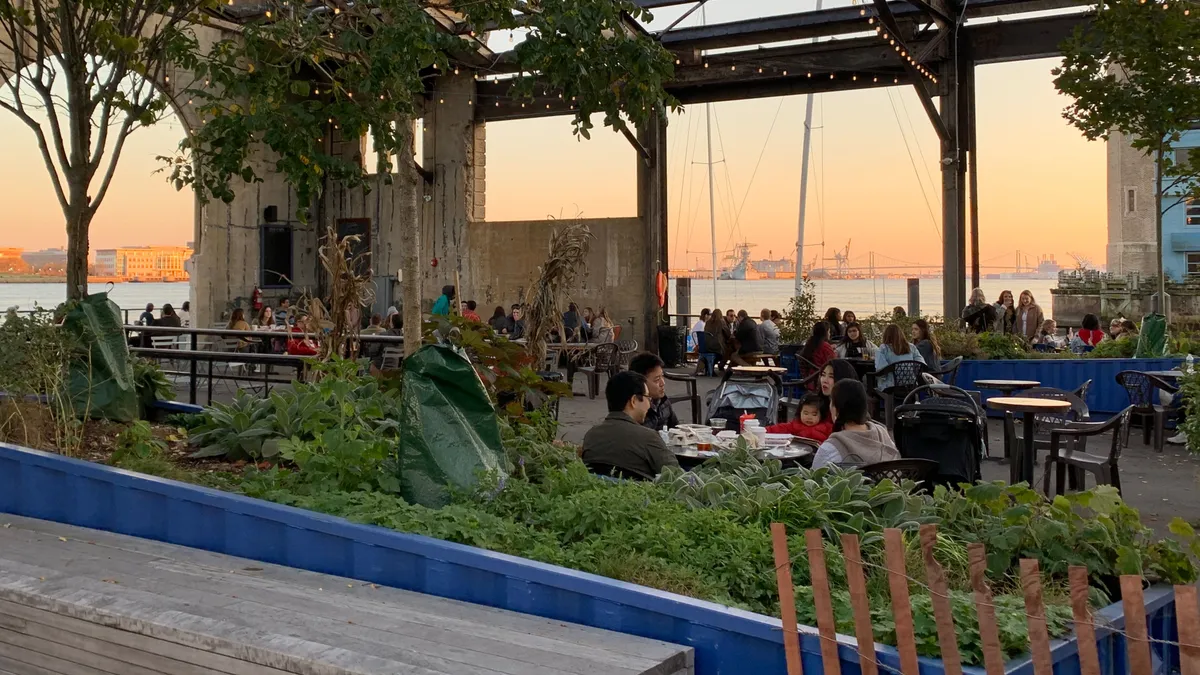Dive Brief:
- Planning more equitable public spaces that are responsive to community needs could help cities recover from the coronavirus pandemic, according to a report released Wednesday by the nonprofit Knight Foundation and urban research and design consulting firm Gehl.
- The groups studied seven public spaces in Akron, OH; Detroit; Philadelphia; and San Jose, CA, which were supported with more than $50 million in combined funding. By evaluating those spaces, the report found projects with quality design and resident-centered programming were more regularly used and received more positive feedback. Some 81% of respondents in a survey of over 800 people near each space said they felt they would fit in better to a space if cities incorporated community feedback.
- When public spaces and their programming are community-led, the report said projects could have a "ripple effect" on the rest of the city, as it can help in areas like workforce development and youth engagement and contribute to broader community development and resiliency.
Dive Insight:
The role of parks and other public spaces in cities have become increasingly important during the pandemic, as people seek ways to stay active in a socially distant way. Many cities have responded to that trend by closing certain streets to vehicle traffic, including in parks. And while it remains to be seen whether that street closure trend will stick, some spaces like New York's Central Park had already committed to car-free areas before the pandemic.
The Knight Foundation said lessons learned during the pandemic could help cities rebound and make their communities more resilient. That "ripple effect" from community-led design of public spaces, for instance, can help cities address issues like public safety, which the report notes took place in Centennial Park in Philadelphia.
At that site, the report said, some programming looked to engage Black men amid last summer's unrest over policing, while the Detroit Riverfront's Dequindre Cut used public art to document the shared experiences of Black activists and advocates in their efforts for racial justice.
Lilly Weinberg, senior director of community and national initiatives at the Knight Foundation, said community-driven design can also touch long-standing urban issues like displacement and gentrification, while the best examples were able to adapt to the pandemic and the need to alter usage habits.
"Public spaces that were community-led… during COVID-19, they were able to be nimble, they were able to respond to the needs within their community and be able to do things that were responsive to the moment in time," she said. "Whether that meant innovative programming for socially distancing, we saw various examples of that. I think moving forward, there's a tremendous opportunity for us to lean into this moment in time."
Community-driven public space design can also foster higher rates of attachment and trust among communities of color, according to the report. For example, 79% of Black respondents near the neighborhood parks studied said the space was "special to me" compared to 70% of all respondents. However, challenges remain to fostering trust and inclusion among communities of color, particularly for Black residents, due to "legacies of disinvestment and distrust," the report writes.
Investing in public spaces could also be easier said than done for cities in the coming years as local leaders face massive budget deficits in the aftermath of the pandemic. The National League of Cities estimates budget shortfalls of $90 billion for cities nationwide, while the annual Menino Survey of Mayors found that many foresee dramatic cuts in parks and recreation as they try and balance their books.
But Weinberg said while there are tough decisions ahead, public space and programming can have long-term benefits, especially if usage is high. And a potential infrastructure package from Congress could include money for such investments, which she said could be helpful too.
"What I'd encourage cities to do is to look at the possibility and look at the demand and the usage that we've seen," Weinberg said. With federal funds potentially available, she added cities can use that to "think strategically for how they can capture some of the dollars within their own community to really think for the future of adaptive, more equitable public spaces."
For city leaders, it could be challenging to have the community take the lead on determining programming, as some may be used to a more top-down approach with less of an emphasis on engagement. But as an increasing number of cities look to engage residents on a variety of platforms, Weinberg said community-driven efforts can be successful, especially if cities make use of partner organizations.
"The question is, who is the right partner that's really truly trusted within that specific area, that can partner with the city and help lead this work, and convene this work," she said. "I think that would be my best advice for doing this. And then also to have some grace; this takes time. It can sometimes be messy but that it really pays off with the impact that occurs when we have community-led public spaces."












